thecomputerguy
Well-Known Member
- Reaction score
- 1,448
Client has a 17m-ch0013dx stuck in a no boot after a Windows 11 update. Laptop is getting various blue screens after spinning for an ungodly amount of time including Watchdog driver errors, and Inaccessible boot device errors.
Laptop is about a year old.
Tried all the usual, system repair, system restore (no OS detected), uninstall previous updates.
The OEM NVme is detected in the BIOS as per the image below but it is an optane NVme.
I removed the OEM NVme and mounted it to my NVme usb adapter. The drive will not detect in Windows but the adapter is detected, and I know the adapter works. I noticed when removing the NVme drive from my test system that it was noticeably hotter than expected.
I dropped in a new Samsung NVme into the laptop and it is detected by the BIOS but when I run W11 setup the drive is not detected in the installation environment.
Moving through the BIOS I do not see any settings that would allow the new NVme to be detected. Typically when this happens it can usually be corrected by changing the BIOS from RAID to AHCI (at least in my experience). Usually after that I will see the drive in the installation environment.
I tried disabling Secure Boot to see if that would help (even though I know W11 requires secure boot), still no Samsung drive in the installation environment. Here is what I see in the BIOS.
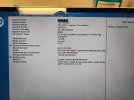
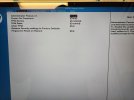

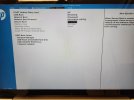
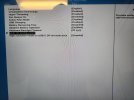

ORIGINAL DRIVE
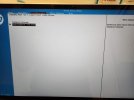
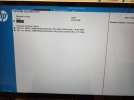
SAMSUNG DRIVE
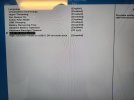

Thankfully he does have a cloud backup as of 12/8 and it appears that data may be minimal (11GB). It is possible that may be because when I setup his laptop I had everything backing up in OneDrive and OneDrive will typically be excluded from the backup task. I will have to check.
Any idea on how I can get this Samsung drive to appear in the installation media?
Laptop is about a year old.
Tried all the usual, system repair, system restore (no OS detected), uninstall previous updates.
The OEM NVme is detected in the BIOS as per the image below but it is an optane NVme.
I removed the OEM NVme and mounted it to my NVme usb adapter. The drive will not detect in Windows but the adapter is detected, and I know the adapter works. I noticed when removing the NVme drive from my test system that it was noticeably hotter than expected.
I dropped in a new Samsung NVme into the laptop and it is detected by the BIOS but when I run W11 setup the drive is not detected in the installation environment.
Moving through the BIOS I do not see any settings that would allow the new NVme to be detected. Typically when this happens it can usually be corrected by changing the BIOS from RAID to AHCI (at least in my experience). Usually after that I will see the drive in the installation environment.
I tried disabling Secure Boot to see if that would help (even though I know W11 requires secure boot), still no Samsung drive in the installation environment. Here is what I see in the BIOS.






ORIGINAL DRIVE


SAMSUNG DRIVE


Thankfully he does have a cloud backup as of 12/8 and it appears that data may be minimal (11GB). It is possible that may be because when I setup his laptop I had everything backing up in OneDrive and OneDrive will typically be excluded from the backup task. I will have to check.
Any idea on how I can get this Samsung drive to appear in the installation media?
